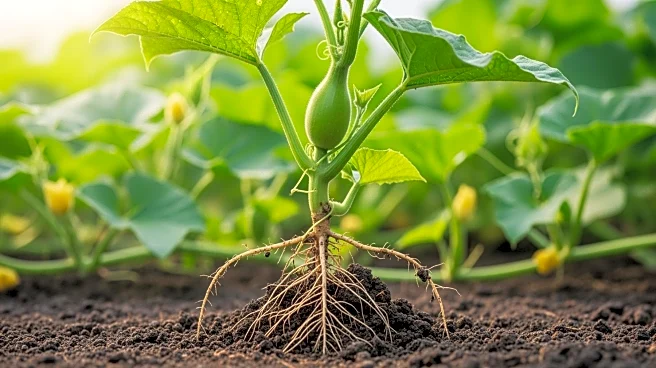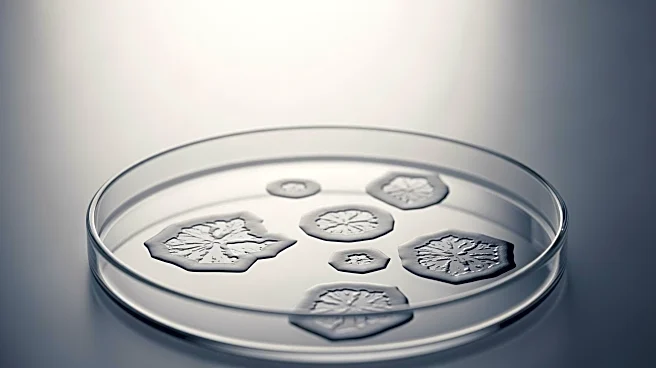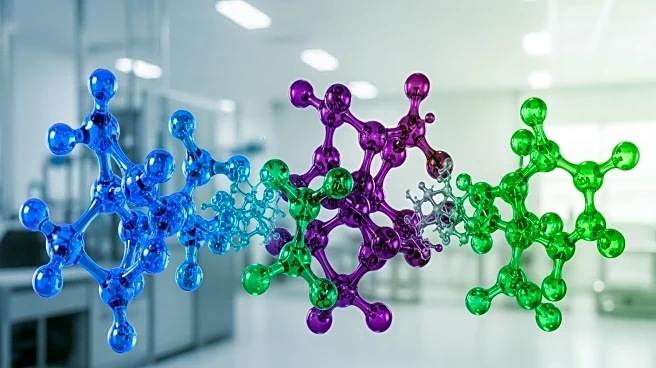What's Happening?
Researchers at Kobe University have identified the biological mechanism that allows pumpkins, squash, and other gourds to absorb pollutants from the soil into their edible parts. The study, led by agricultural
scientist INUI Hideyuki, found that a specific protein in these plants binds to pollutants, facilitating their movement through the plant's tissues. This protein's structure and its binding strength to pollutants determine the level of contamination in the plant's fruit. The research also revealed that in high-accumulating varieties, these proteins are more concentrated in the plant's sap, which is crucial for transporting pollutants to the aboveground parts.
Why It's Important?
This discovery has significant implications for food safety and environmental management. Understanding the mechanism of pollutant accumulation in gourds could lead to the development of safer agricultural practices by genetically modifying plants to reduce pollutant uptake. Additionally, this knowledge could be applied to phytoremediation, using plants to clean contaminated soils. By enhancing the pollutant-binding ability of these proteins or controlling their secretion into plant sap, it may be possible to cultivate crops that do not accumulate harmful chemicals, thereby reducing health risks associated with consuming contaminated produce.
What's Next?
The research team plans to explore the potential of using this knowledge to create plants that can effectively absorb and digest soil pollutants, turning them into tools for environmental cleanup. This could lead to new technologies for remediating contaminated land, offering a sustainable solution to soil pollution. Further studies may focus on genetic modifications to enhance the pollutant-binding capabilities of these proteins, potentially leading to breakthroughs in both agriculture and environmental science.











